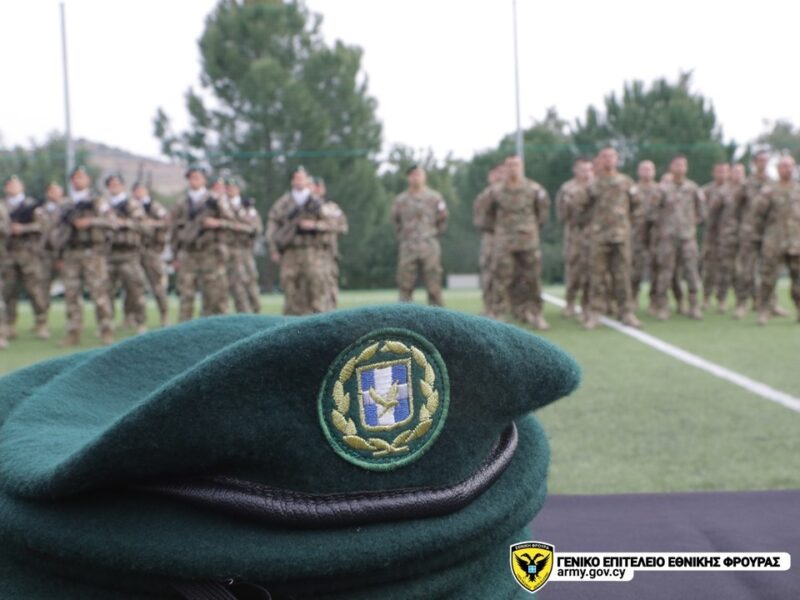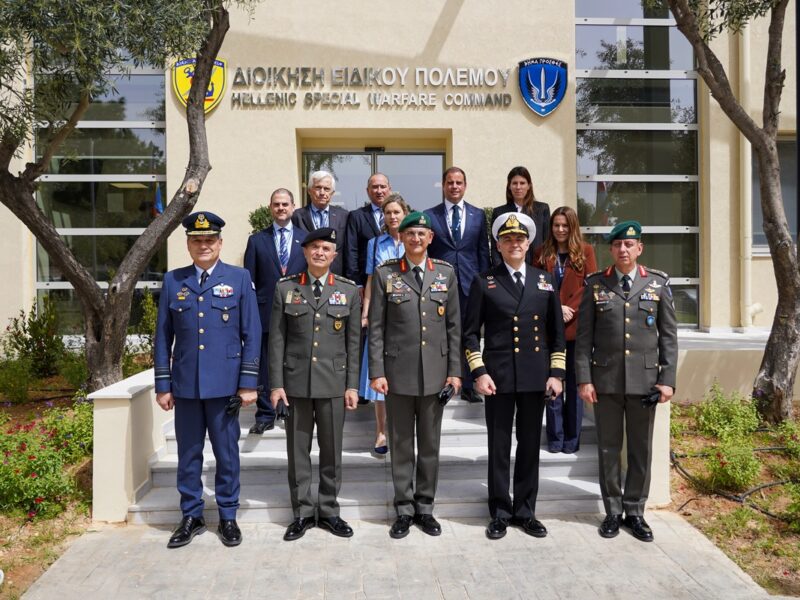We have referred to the value of Electronic Warfare in a series of our articles. Likewise, we have also presented electronic warfare solutions/systems that, in our opinion, would be useful to evaluate or acquire. What is certain is that Electronic Warfare is a major chapter in modern military operations, on land, sea and air.
Electronic warfare systems multiply the power of friendly forces and limit, if not neutralize, the enemy’s ability to conduct operations by attacking its unfettered access to the electromagnetic spectrum. Electronic Warfare has the parameter of protecting friendly forces from enemy attacks and the parameter of attacking enemy forces.
Electronic Warfare is one of the operations of the Transmission Weapon, a weapon of the Hellenic Army (HE) quite neglected. Of course, the extensions of the Electronic War concern the whole of the Weapons and Corps of the ES as the communications involve the whole of the Combat or Combat Support Weapons and of course the Administrative Care.
The ES implemented the program of the Greek company SONAK in the early 2000s through which it acquired whatever electronic warfare capabilities it has today and utilizes with two Electronic Warfare Battalions.
These two Electronic Warfare Battalions are subordinate to the 1st and 2nd Communications, Electronic Warfare, Informatics and Surveillance Complexes (2nd SEHPPEP) and cover the needs of the D Army Corps and ASDEN respectively. The two Electronic Warfare Battalions of the ES are 471 (headquartered at ASDEN headquarters and with sub-units on the islands) and 476 (Xanthi – D Army Corps). The two Battalions have a special composition consisting of listening centers, jamming centers and radio direction finders for the purpose of recording transmissions and receptions assisting in targeting and information gathering – early warning missions.
The structure and organization of the two Battalions is special and focused on Electronic Warfare as opposed to the classic Transmission Battalions or Transmission Companies of the ES Formations.
It should be noted that the PA also has electronic warfare units both in Thrace and in the Eastern Aegean, but their equipment is judged to be obsolete.
For the Security Service and for the Armed Forces in general, the priority is to deal with the following threats:
Turkish ground systems of radar units and anti-aircraft systems units
Today the main threat is the large volume of Turkish UAVs (Bayraktar-TB2, Akinci, Anka) both in peacetime and in times of crisis/tension and of course war operations. At the same time, the Turkish Armed Forces have made technological advances in Electronic Warfare utilizing new domestically developed systems.
It is a fact that in recent years Turkey has continuously invested in Electronic Warfare and in fact in systems of Turkish design and development. For example, the mobile Electronic Warfare system Koral consists of two autonomous units mounted on 8 x 8 wheeled vehicles. The first unit incorporates information gathering systems (ELINT : Electronic Intelligence) and Electronic Support Measures (ESM : Electronic Support Measures) systems, while the second unit incorporates an active jammer.
In other words, the first unit is responsible for locating the target, while the second unit is responsible for dealing with and neutralizing it. According to journalistic sources the maximum range of the system is of the order of 100+ kilometers. It is an automatic system, capable of detecting and engaging multiple targets, both radar systems and missile guidance/guidance systems. The system has been in service since February 2016 with the Turkish Air Force, most likely for air defense suppression, in conjunction with the Harpy hovering anti-radar munitions.
In November 2019, Aselsan announced that the Turkish Army received a new electronic warfare system, REDET II (Radar Elektronik Destek/Elektronik Taarruz). It is a self-propelled (wheeled) electronic warfare system. Each REDET II consists of two vehicles. A vehicle performs electronic support missions with the ability to detect, intercept and identify the electromagnetic emissions of enemy radars. The other vehicle has the ability to suppress the operation of enemy radars, through jamming.
It was preceded, in August 2019, by the delivery to the Turkish Army, by Aselsan, of 11 self-propelled MILKAR-3A3 Electronic Warfare systems, which have the ability to jam communication systems on V/UHF frequencies, regardless of the platform that carries it. In total, the Turkish Army will receive 15 systems under the 2015 contract. Each system consists of two vehicles. In addition to jamming enemy communications systems, the MILKAR-3A3 can also transmit false information to confuse enemy forces. And let’s not forget that the Turkish Air Force has launched the acquisition of four specialized Electronic Warfare aircraft.
It is clear that the Turkish threat, in terms of Electronic War, is real and must not go unanswered under any circumstances. Greece must and must invest in Electronic Warfare, both as a means of protecting friendly command and control scale and as a means of disrupting Turkish command and control scale. Electronic Warfare plays and will continue to play a central role in military operations and is an area we cannot afford to ignore, especially the communications jamming part.
At the tactical and operational level, the above Turkish systems have different missions in the Aegean and Thrace Theaters of Operations. Some systems are intended as communications jammers, others as means of targeting based on communications emissions in the electromagnetic spectrum, and finally some others for jamming Greek radar units and air defense means in Thrace and the Aegean.
Alongside the above Turkish electronic warfare systems, the Turkish threat includes the large volume of Turkish UAVs in a multitude of missions (targeting, tactical reconnaissance, intelligence gathering, attacks with armed UAVs or killer UAVs such as Harpy or even as decoys for Greek anti-aircraft to broadcast and reveal their position).
Also, electronic warfare systems are economical solutions, always in relation to the benefits they provide, especially those that are integrated, that is, they combine the parameter of protecting friendly forces and the ability to carry out electronic attacks on enemy infrastructure. One such system is the Scorpius of the Israeli IAI (Israel Aerospace Industries), which it presented in November 2021. The Scorpius can be integrated into land, air and sea platforms.
Scorpius’ mission is to attack the enemy’s electronic systems in the electromagnetic spectrum. It has the ability to (simultaneously) target multiple threats, at different frequencies and from different directions.
And this is because it is based on AESA (Active Electronically Scanned Array) technology, which activates multiple beams, allowing Scorpius to scan in all directions and detect/counter multiple threats. Scorpius-G (Ground) is the land version, Scorpius-N (Naval) is the naval version, Scorpius-SP (Self-Protection) is a turret, used by aircraft for self-protection and Scorpius-SJ (Stand-off Jammer) is an aircraft fuselage for electronic attacks. There is also the training version Scorpius-T (Training).
According to the IAI, the Scorpius can intercept UAVs, ships, missiles, communications systems and low-intercept technology radars. Scorpius-G is a mobile system capable of detecting and intercepting ground and air threats. In essence the system creates a buffer zone within which friendly forces can safely operate. That is, it contributes to the creation of local supremacy.
In its presentation, IAI states that Scorpius-G is a “long-range” system, but does not specify its range. According to IAI, the system can detect very low-intensity signals and intercept multiple threats at the same time. Essentially, Scorpius-G maps, in real time, the battle formation of enemy forces in the area of interest.
Scorpius-N protects friendly naval forces from threats such as cruise missiles, anti-ship missiles and cruise missiles by jamming their electro-optical systems and sensors. The Scorpius-SP nacelle protects aircraft (fighters, transports, airborne early warning and control systems, and aerial refueling aircraft) against air-to-air threats.
Finally, the Scorpius-SJ shuttle is a system for conducting jamming against enemy fighter aircraft, ground air defense units, enemy UAVs and Command and Control Centers. The Scorpius-T is used to train operators, both at the system usage level, and at the operational level by running various combat scenarios.


